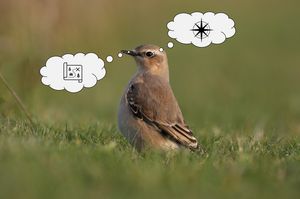SFB 1372 – Nav02
Assessing magnetoreception and orientation/navigation hypotheses in free flying birds

To achieve a comprehensive understanding of magnetoreception and vertebrate navigation, it is important that key behavioural results obtained in the laboratory are retested in the wild with freely-moving animals. Anthropogenic electromagnetic radiation (electrosmog hereafter) can disrupt the magnetic compass of night-migratory birds in the laboratory. Since electrosmog occurs nearly everywhere on the globe, it is a highly relevant, but yet unresolved, question of global ecological importance, whether electrosmog also interferes with bird migration in the wild. By radio-tracking the after-exposure effects of electrosmog on free-flying songbirds from 2019-2022, we demonstrated that electrosmog does not have direct biological consequences on bird migration. However, there is an urgent follow-up question emerging from our fundamental study: Does electrosmog affect the departure decisions of migratory free-flying birds when a further compass system (e.g. star compass) is not available? Such a context-dependent effect would significantly reduce migration speed, delay arrival timing at the migratory destination and hence, decrease reproduction success. This could be a contributing factor needed to explain the current decline in night-migratory songbirds.
Second, our previous findings suggest that neither Northern Wheatears nor European Robins rely on information obtained by a putative magnetic-particle-based mechanism for their migratory decisions. Therefore, we now do a virtual translocation experiment to force birds to use their geomagnetic map. Does a magnetic pulse affect the compensation ability of virtually translocated migratory birds? If we find no effect, this will warrant a re-thinking about the existence of a magnetic-particle-based mechanism in night-migratory birds.
You can find more information about the project here.



